The Haitian flag stands as a vivid emblem of the nation’s enduring pursuit of self-determination and growth. More than a mere national symbol, it embodies the collective journey of Haiti, highlighting the resilience and aspirations of its people and captures the essence of Haiti’s struggle for independence and its continuous drive for advancemen.
Flag of Haiti
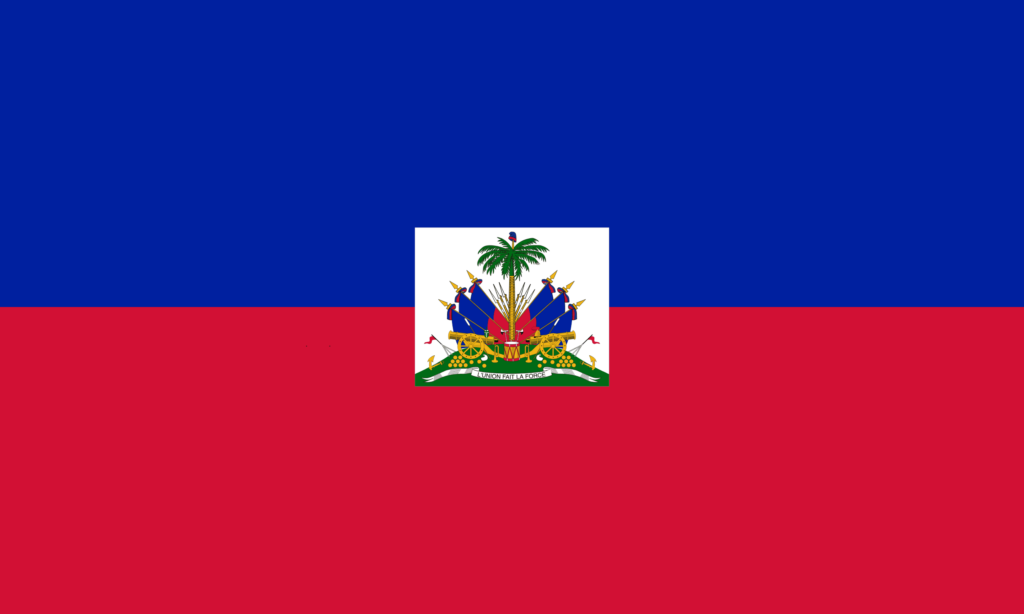
The Haitian flag features a distinctive coat of arms on a white square, set against two horizontal bands. The coat of arms includes a collection of weapons, a royal palm, and the cap of liberty, symbolizing defense, independence, and freedom.
Flag of Haiti: Color Palette
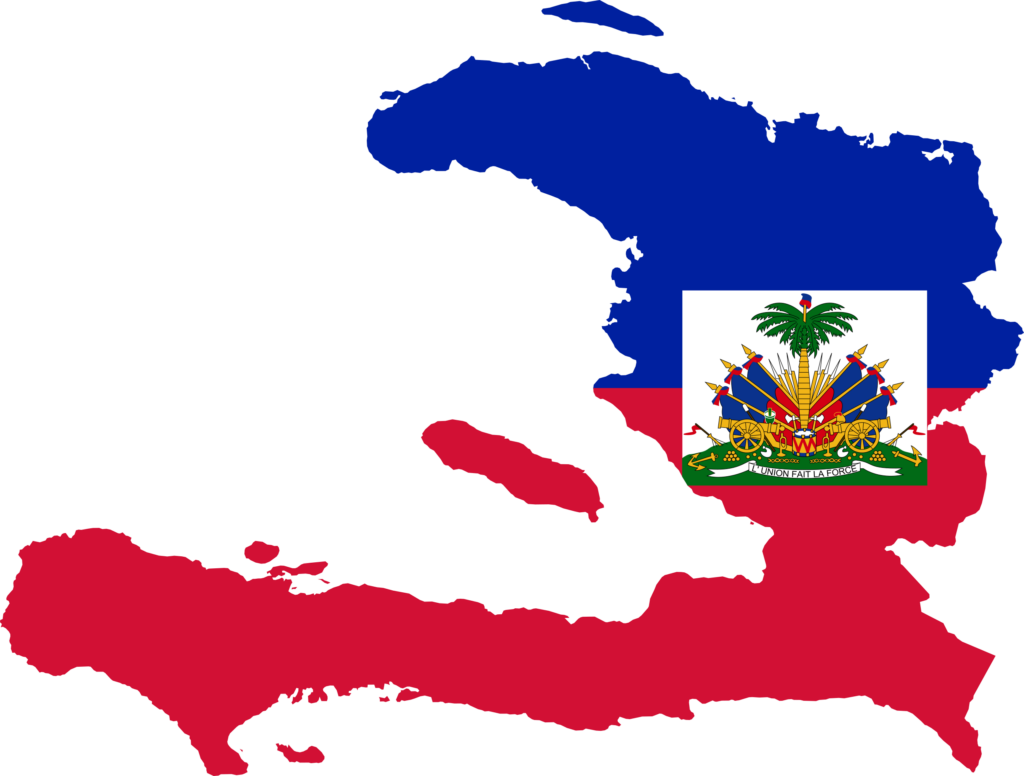
Haiti Flag Emoji: 🇭🇹
The color palette of the Haitian flag is both striking and symbolic. Comprising primary colors that convey deep meanings tied to the nation’s history and values, each hue in the flag’s design is set to be explored for its unique significance.
Meaning of Each Color
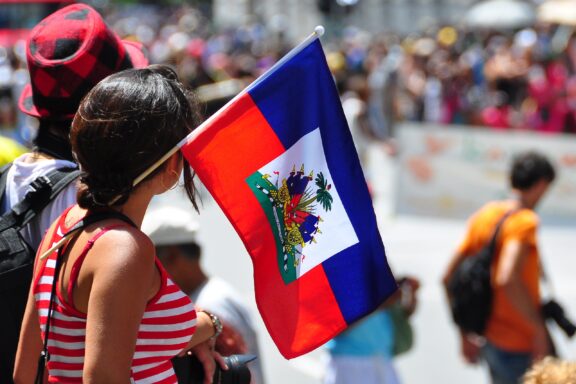
Blue
The top band of blue in the Haitian flag is a representation of the African heritage of Haiti’s people. This color choice acknowledges the roots of the majority of Haitians, who are descendants of African slaves brought to the island during the colonial era.
The blue is also symbolic of the Caribbean Sea and the sky, linking the flag to the island’s natural environment and its position within the Caribbean.
Red
The red band at the bottom of the flag symbolizes the blood shed in the fight for independence from colonial rule. This color speaks to the bravery and sacrifice of the Haitian people in their struggle for freedom, reflecting the nation’s history of resilience and the cost of its hard-won liberty.
Coat of Arms of Haiti
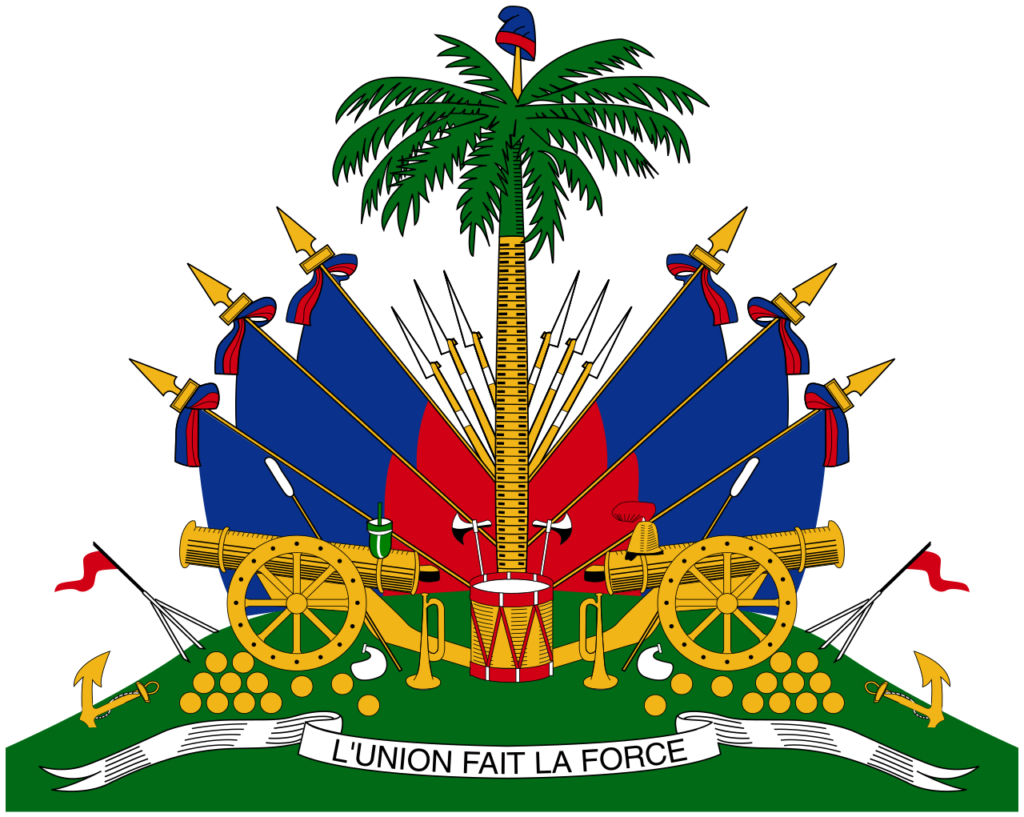
The Haitian Coat of Arms embodies the nation’s struggle for freedom and unity. Its central symbols, including the palm tree and the Phrygian cap, signify independence and liberty. The broken chain links represent the end of slavery and the triumph over colonialism.
The martial elements like cannons and anchors reflect the defense of sovereignty and maritime heritage. Emphasizing the value of unity in its motto “L’Union Fait La Force,” the Coat of Arms encapsulates Haiti’s resilience and collective spirit.
Historical Evolution and the Meaning Behind Changes
he flag of Haiti, reflecting the nation’s tumultuous history, has undergone significant transformations in its design and symbolism. Initially created in 1803 by Jean-Jacques Dessalines, the flag was a symbol of independence, crafted by removing the white band from the French Tricolor to reject French rule.
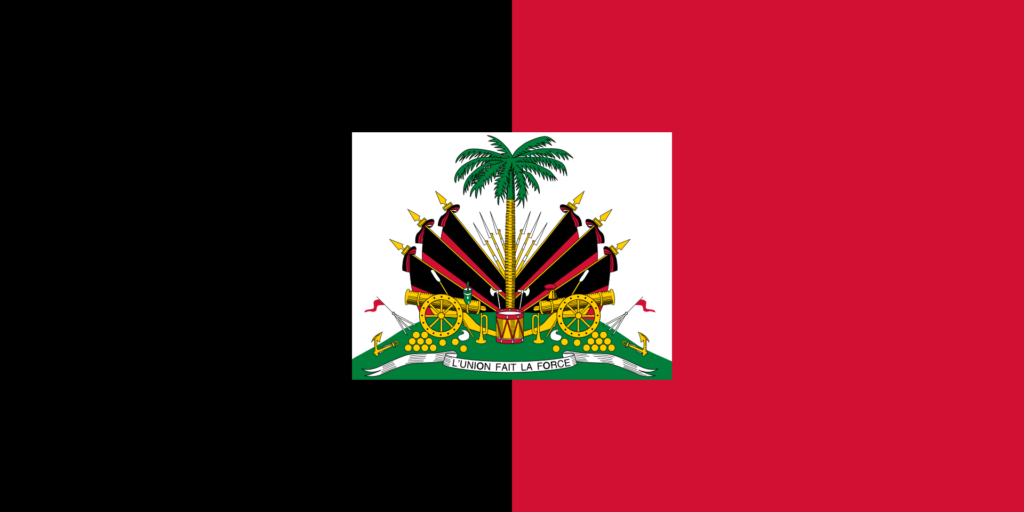
The design evolved under Emperor Jacques I in 1805, adopting black and red colors to signify the new, independent empire.
Following the empire’s fall, Haiti returned to the blue and red design, emphasizing the values of the revolution and incorporating the new coat of arms. However, during the Duvalier dictatorship (1964-1986), the flag again shifted to black and red, reflecting the regime’s departure from democratic and revolutionary symbols.
The modern flag, reinstated post-1986, returns to the original blue and red design with the coat of arms, symbolizing a renewed commitment to the principles of freedom and unity from the revolution.
These changes not only represent the nation’s historical shifts but also its evolving identity and governance, marking significant periods in Haiti’s journey as a nation.
Overall Symbolic Meaning of the Flag
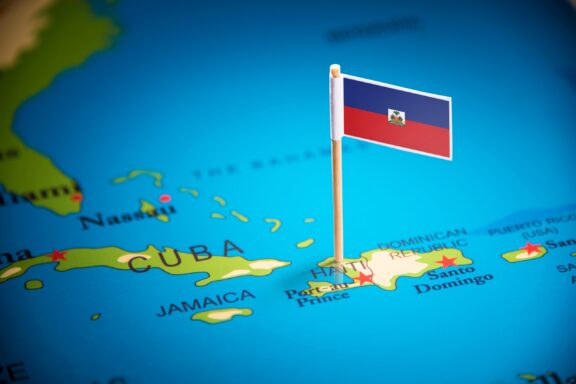
The Haitian flag symbolizes the empire and later reverted to blue and red, reflecting revolutionary ideals. The Duvalier era saw a return to black and red, indicating authoritarian rule. The current blue and red design, readopted post-1986, embodies Haiti’s founding principles of freedom and unity.
Similar Flags to the Flag of Haiti
While the Haitian flag is unique in its symbolism and history, it shares design elements and color schemes with several other national flags. Here’s a look at some flags that bear resemblance to Haiti’s, highlighting the diverse reasons for these similarities
Liechtenstein
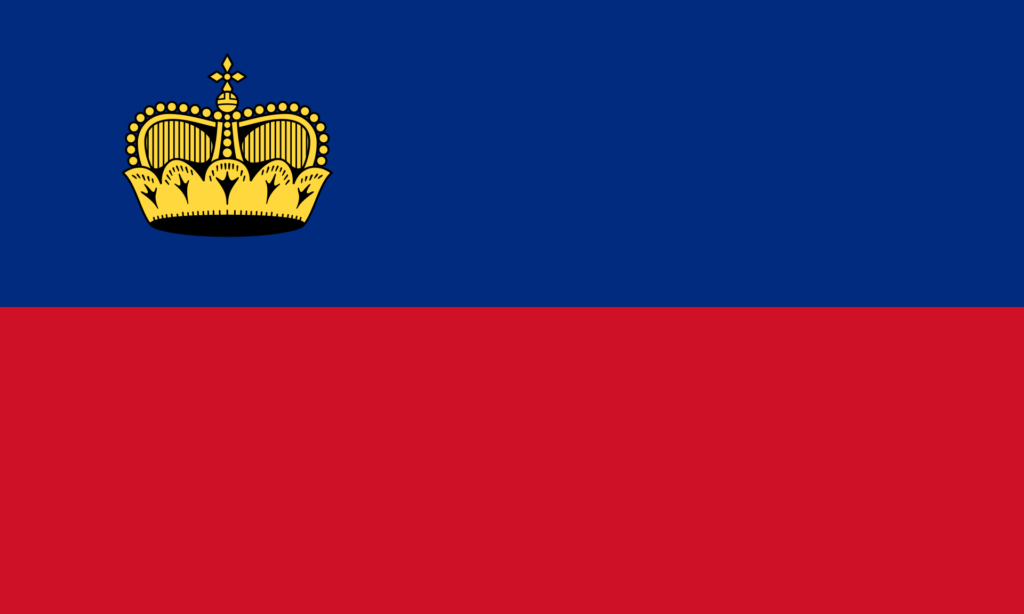
Liechtenstein’s flag, similar to Haiti’s, has two horizontal bands, blue on top and red at the bottom. The primary distinction is the gold crown positioned in the canton on the blue band in Liechtenstein’s flag. The similarity in color arrangement suggests a common use of red and blue in national flags to represent concepts like liberty and valor.
Samoa
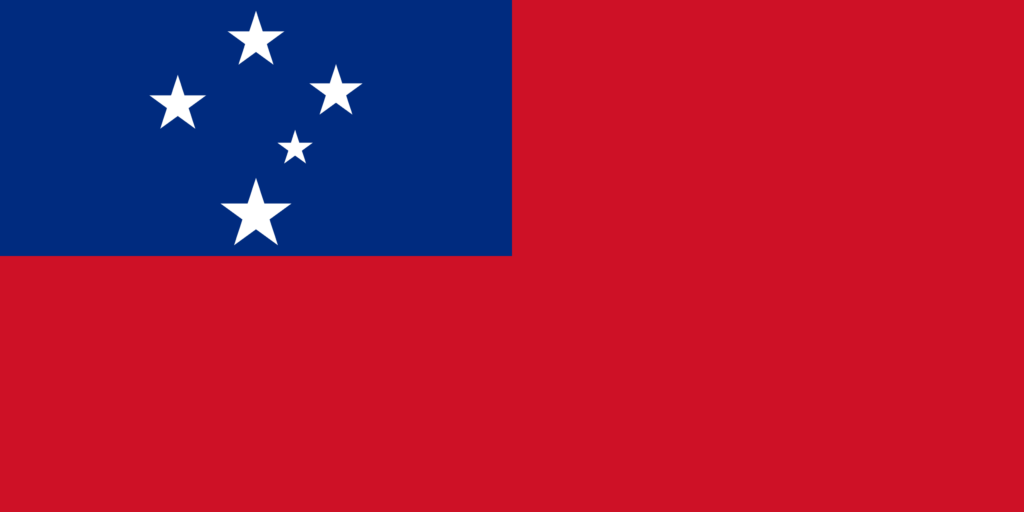
Samoa’s flag has a distinct design with a red field and a blue canton containing white stars representing the Southern Cross constellation. The use of red and blue, although in a different configuration compared to Haiti’s flag, is a notable similarity. These colors in Samoa’s flag symbolize courage and freedom, common themes in many national flags.
Conclusion
The Haitian flag symbolizes the nation’s revolutionary heritage and unity. Unique among national flags for representing a successful slave revolt, it embodies Haiti’s fight for freedom. To Haitians, it is a symbol of pride and identity, reflecting their historical struggles and aspirations on a global stage.
Image Sources and Copyright Information
- Person Holding Haitian Flag at a Public Gathering: © abdallahh/Flickr
- Haiti Location on Map with Flag Pin: © BUTENKOV ALEKSEI/Shutterstock
- Samoan Flag: © hyotographics/Shutterstock